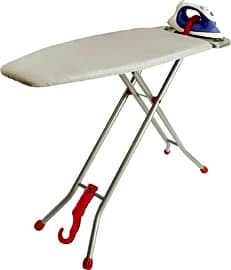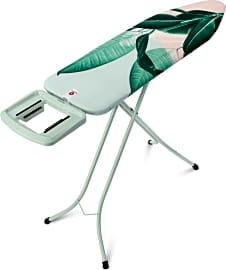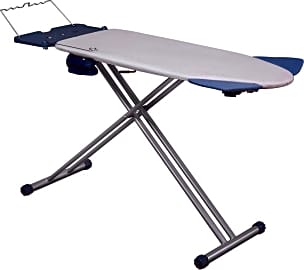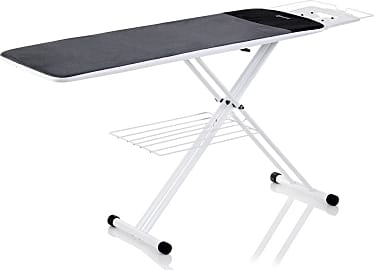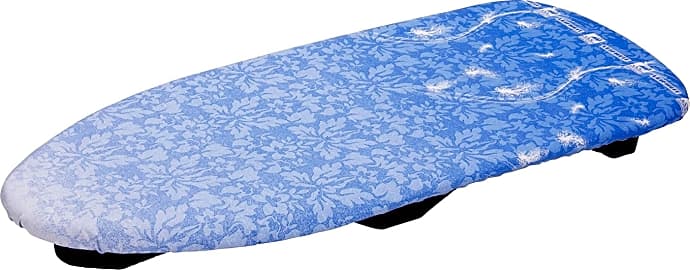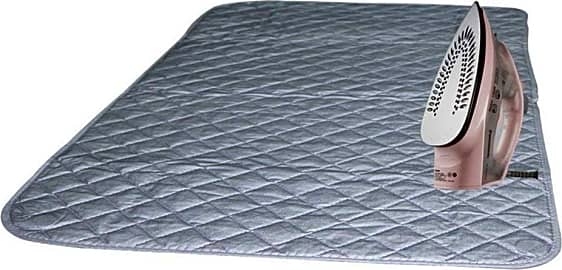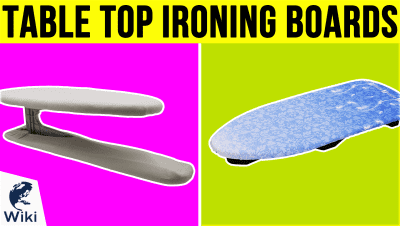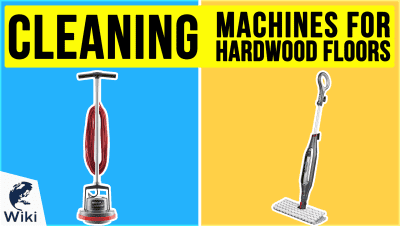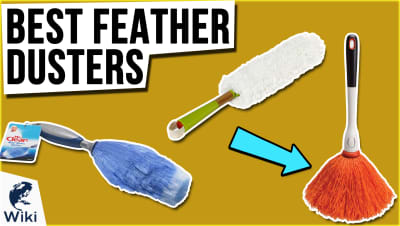The 10 Best Ironing Boards

This wiki has been updated 43 times since it was first published in February of 2015. Looking your best takes some effort, and if you can't bear the thought of leaving the house in wrinkled threads, then investing in one of these ironing boards is a must. They will help you to look fantastic at all times and are available in sizes and shapes to suit any home, from a dorm room to a mansion. When users buy our independently chosen editorial recommendations, we may earn commissions to help fund the Wiki.
Editor's Notes
February 05, 2020:
Although it offers a convenient size, we have decided to remove the Bartnelli Foldable at this time, as there are a few durability issues that can make it frustrating over the long run. We've also, after some consideration, opted to remove the Homz Durabilt DX1500 over concerns about its locking mechanism. But when it comes to top options, we still like the Bartnelli Multi-Layered and its robust construction. It has just enough features to be usable, but not so many that it becomes prohibitively expensive for some, like the The Board 300LB by Reliable. There's also the popular Brabantia Size B. We appreciate that it isn't too pricey, and that there are several cute cover designs to select from, but some find it a bit wobbly.
Finally, we have added one strong table top ironing board, the Honey-Can-Do Tabletop. It does exactly what you'd expect: gives you an ironing surface that doesn't require tons of storage space in your home. If this model is still too large, you might consider the Above Edge Magnetic, a totally flat, legless choice that offers portability that can't be beat.
Special Honors
The Board 500VB by Reliable The Board 500VB by Reliable is no simple, low-end model. It costs more than some smartphones, but it offers both up-air and vacuuming modes that ensure you always have a crisp finish. The polyester cover is quick-drying, too. reliablecorporation.com
Lehman's Amish-Made Fans of high-quality, handcrafted items will want to check out the Lehman's Amish-Made. You can choose between a natural and dark finish, but whichever you select, the surface is smooth and safe for all types of garments. lehmans.com
Subtle But Important Differences In Ironing Boards
A full-size ironing board is 12 to 18 inches wide and around four feet long.
An ironing board may not be as decorative of an item as a piece of furniture, but that doesn't mean one shouldn't put some thought into the one they buy. Considering that a person may do between seventy and several hundred miles of ironing in their lifetime, it's important that your ironing board fits your needs. First, consider the size and layout of your home. If you do not have much space, you may want a wall-mountable ironing board.
Mountable ironing boards do not, however, offer the portability of stand-alone models. These can be moved from room to room, so you can conceivably iron clothes while you watch television, keep an eye on your child playing outdoors, or even monitor something cooking on the stove. Whether you choose a mountable or portable ironing board, you still need to decide on a full size or smaller version. A full-size ironing board is 12 to 18 inches wide and around four feet long. This is big enough to allow you to iron larger items like pants and shirts, without having to rotate or adjust them very much. Those with limited space may have to opt for a smaller ironing board instead, so that it can be easily stored away when not in use.
The fabric covering on an ironing board can also make a large difference in how effective they are. Breathable fabrics allow the moisture from the steam to evaporate, which is an important part of how ironing removes wrinkles. The issue of proper evaporation brings up another choice: that between a tabletop or standing ironing board. Some boards do not come with legs and are just the ironing surface alone. This style must be laid on top of another table. If purchasing a tabletop model, one should choose one that has feet of some kind. This will elevate it slightly and ensure it doesn't make other surfaces in your home too warm.
Small Extras That Will Make A Big Difference
There are several other features of an ironing board that can make ironing easier and safer. If you like to implement the century-old tradition of creasing your pants, you will need an ironing board with an extension. This will allow you to lay out pants in their full length, to create a crease in one long motion, without needing to break it to unfold a leg. While a lightweight ironing board is easy to transport, it is crucial that it also has sturdy legs. Irons cause 130 burn accidents per year, often from tipping over during ironing. Sturdy legs will help reduce the chances of this happening.
There are several other features of an ironing board that can make ironing easier and safer.
Sleeves are often overlooked in the ironing process, but they should be pressed free of any wrinkles as well. Many ironing boards come with a sleeve attachment, which is just a narrower board that attaches to the main one and is perfectly sized for the arms of shirts. If you are in a rush, or simply do not want to travel all the way back to your closet after ironing each item, look for a board with a hanger bar. This gives you a convenient place to hang clothes right after ironing them, keeping them wrinkle-free until you can store them in their proper place.
One conundrum most people face while ironing clothes is where to put the iron itself when they need both of their hands to unfold another item. Fortunately, some boards come with a rest specifically for the iron. This allows one to safely place the iron when not in use. Many boards can even swivel to the left and right, so you do not need to move as much while you iron. Another feature that enhances user comfort is height adjustability; this eliminates the need to bend over or stand on your toes while ironing.
A History Of Ironing Boards
It is hard to imagine a time when people did not iron clothes on a flat, wide surface. But modern steam irons have come a long way since their predecessors, and so have the surfaces they're used on. The ancient Chinese pan iron, for example, required two people to hold a linen taught. The one ironing would simply press the iron against the fabric, with nothing but air behind it. Koreans used to iron against stone slabs, which provided fine enough surfaces, but were very heavy and could break easily if dropped.
In the 19th century, tailors began using something called a press board, which was essentially an ironing board small enough to fit in one's lap. If people wanted a larger ironing surface, they would support a large board between two chairs. Ironing boards didn't always have the mesh covering that they do today. Older varieties would simply be covered in a flannel or wool blanket. The first patents for folding ironing boards did not show up until the late 1800s but at the time they were called ironing tables.
When ironing boards first came out, various shapes and sizes were made for specific items, like bonnets or sleeves. In 1866, a larger board came out that could fit a full dress or shirt, and included an attachment for bonnets. This model could also be folded up and was far more lightweight than previous versions.



